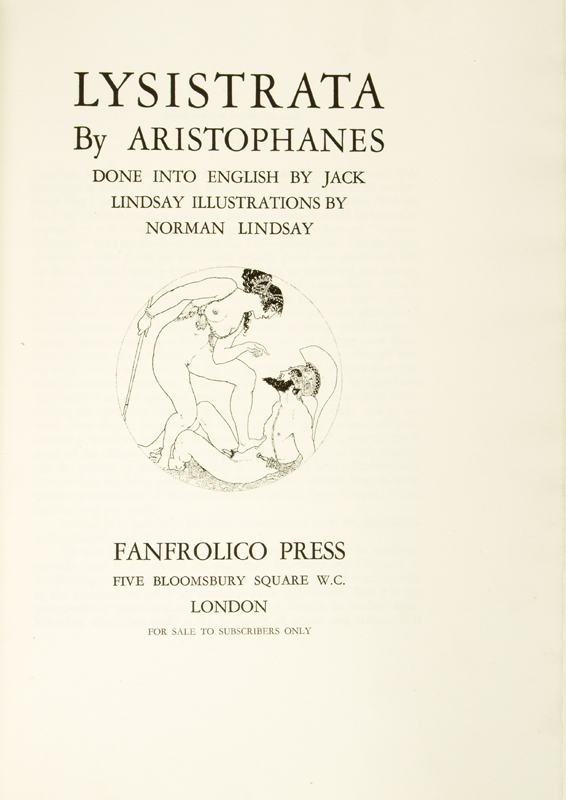

On the other hand, once the women have taken their oath, Lysistrata takes on some of the qualities associated with men: she divides the women, like an army commander, into two battalions. As far as gender stereotyping goes, on the one hand, Aristophanes uses them for comic effect: for example, he portrays the women as sex-obsessed – at the start of the play Lysistrata has to be very persuasive to convince the women to agree to her proposed sex strike, and there is much comedy produced by references to sex toys and dildos that the women of Athens resort to while their men are away fighting.

However, Lysistrata has other themes and preoccupations. He asserts that Aristophanes “takes aim at the violent consequences of war” (59) and that the play makes frequent reference to “the stresses and trauma of war” (60). Certainly, for Tritle, the play has as much to say about war as it does about peace.

Certainly at various points in the play the women lament “the loss of their sons, their loneliness, and the sterile wasting away of the younger generations” (Harsh 294), and “powerful appeal for establishing Pan-Hellenic peace and unity” (292). Tritle writes that “war permeated Athenian and Greek society and its violence and traumas echoed everywhere” (60). The Peloponnesian War was going badly for Athens when Aristophanes wrote the play: many of its allies had changed their allegiance to the Spartans and the military expedition to Sicily had been a complete disaster with the loss of many young Athenians (Tritle 59). Of course, the concomitant corollary of peace is war.

To describe the main theme of Lysistrata as ‘peace’ is to limit and to diminish the play’s other themes. Lysistrata does present peace as its main theme, but its presentation also involves inter-related themes such as “men and women, sex and gender” (Henderson 34), and, in the course of the action, the women in the play are empowered, and Aristophanes explores the whole issue of gender stereotyping by both confirming them for comic purposes and subverting them in the course of the plot. However, such views, while undoubtedly largely accurate, tend to ignore other facets of the play. It means “Dissolver of Armies” (Tritle 59) or “Disbander of Armies” (Henderson 35), and it seems fitting, therefore, that the prevailing critical consensus is that Lysistrata is about peace: Tritle even dubs it “the peace play” (85). The main character’s name – Lysistrata – is one that was given to girls in classical Athens, but, like most names, it has a meaning. First performed in 411 B.C., Lysistrata has now achieved “a fairly permanent place in the modern theatre” (Robson 192), although in the past it was often censored for what Harsh calls its “low comedy” (292).


 0 kommentar(er)
0 kommentar(er)
